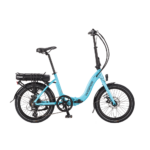I received a new Wisper 905se Sport on the 21/10/09. According to the documentation it was manufactured on 05/04/09 - nearly 7 months ago.
The battery would have been manufactured some time before this.
A new battery costs £515 and since these batteries have a finite life (not sure what as there are lots of guestimates around and it depends on this or that) I feel I am losing out. has anyone any thoughts on this?

The battery would have been manufactured some time before this.
A new battery costs £515 and since these batteries have a finite life (not sure what as there are lots of guestimates around and it depends on this or that) I feel I am losing out. has anyone any thoughts on this?






